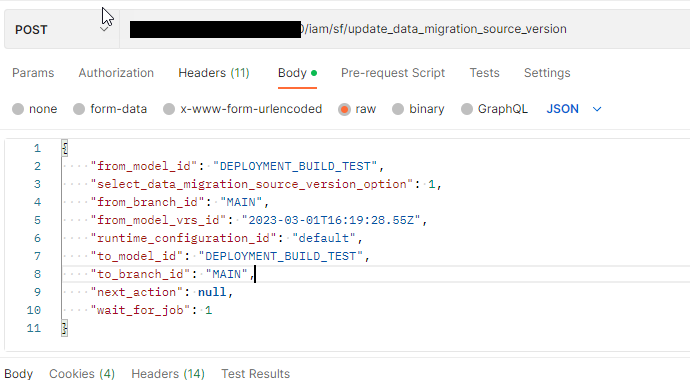Hi all,
we have automated the build of a TW end product using indicium and the start_deployment_package task. This all works just fine, and now we want to automate the update_data_migration_source_version task as well.
When the deployment package generation is successful, we want to mark this version as the start point of the data migration for the next version.
This way, we should have new migration start point for when we start the new version, and eliminate the possible migrations errors that may occur when the developers forget to mark the version correctly as the next start point.
Our build tool knows the correct model_vrs_id for the generated build, as this is read from indicium by selecting the correct value based upon the model_id, branch_id and model_vrs_description.
we then post this to the indicium server url: iam/sf/update_data_migration_source_version
with the following payload:

This call results in a 403 - Forbidden. Using the same values in the task available in SF, is allowed, and will update the Source Model version in the Data Migration and upgrade section of the model.
Note that the account used to login into the sf indicium is the same account used in the automated build, and is added to the SF_developers user group.
Does anyone have an idea what the missing link here is?







